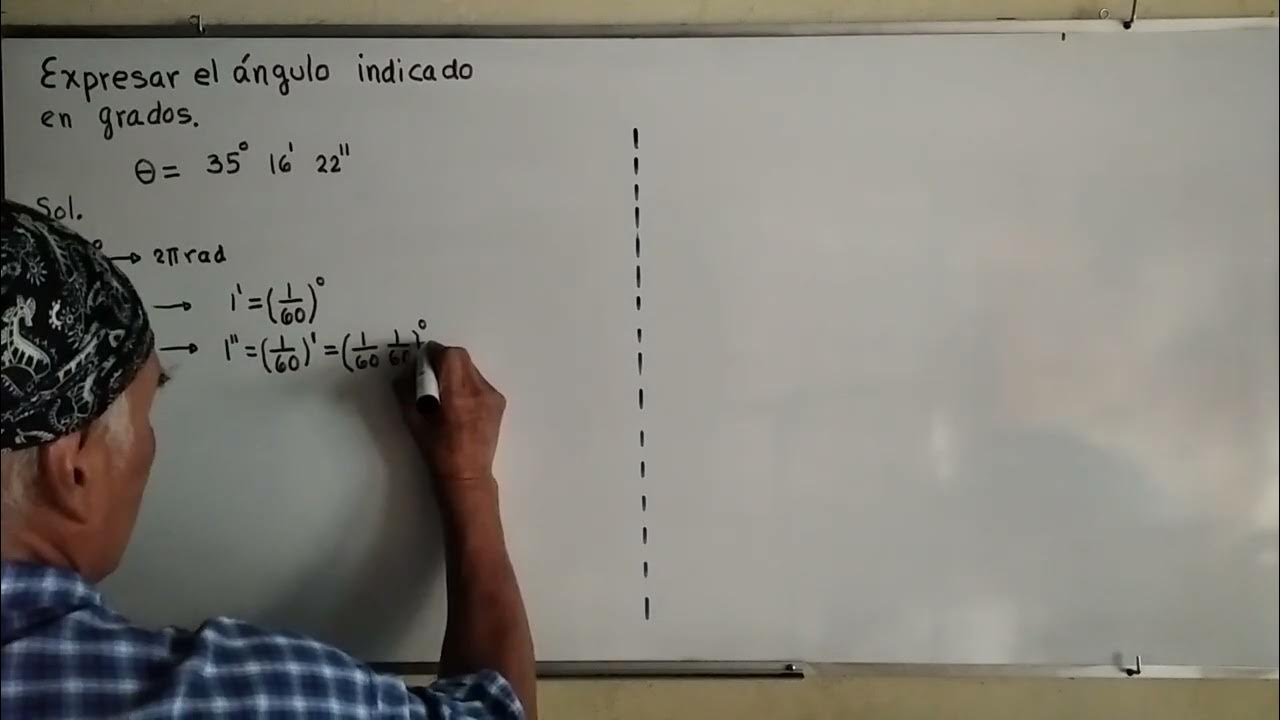HOW TO: Convert Decimal to IEEE-754 Single-Precision Binary
Summary
TLDRIn this video, the presenter demonstrates how to convert a decimal number, like 45.45, into IEEE-754 single precision format. The process involves converting the integer and fractional parts of the number into binary, applying scientific notation in binary, and understanding the significance of the sign bit, exponent, and mantissa. The presenter explains the bias in the exponent, the repetition of binary fractions, and the final conversion to a 32-bit IEEE-754 representation. The video serves as a clear guide for students, especially those in computer organization courses, to master floating-point conversion.
Takeaways
- 😀 Converting decimal numbers to IEEE-754 single precision format involves converting both the integer and fractional parts into binary and then formatting them into a 32-bit structure.
- 😀 To convert the integer part (e.g., 45) into binary, repeatedly divide by 2 and record the remainders from bottom to top.
- 😀 The fractional part (e.g., 0.45) is converted to binary by multiplying by 2, recording the integer part at each step, and repeating the process until a cycle is detected.
- 😀 Binary fractions can result in repeating cycles, such as with 0.45, which creates a repeating binary pattern after conversion.
- 😀 The binary number is then written in scientific notation, adjusting the binary point and expressing the number as a power of 2, which is crucial for IEEE-754 formatting.
- 😀 IEEE-754 single precision format has a 1-bit sign field, an 8-bit exponent, and a 23-bit mantissa, with the exponent having a bias of 127.
- 😀 The exponent is calculated by adding the bias of 127 to the exponent in scientific notation (e.g., for an exponent of 5, the biased exponent is 132).
- 😀 The mantissa is taken from the binary representation of the number after the binary point, truncating or repeating as necessary to fit the 23-bit limit.
- 😀 The exponent in IEEE-754 format is represented in binary with a bias, meaning the actual exponent is the stored value minus 127.
- 😀 IEEE-754 representation is a way to store decimal numbers as binary, but it introduces precision limits because some decimal values cannot be exactly represented in binary, such as repeating fractions like 0.45.
Q & A
What is the IEEE-754 single precision format used for?
-The IEEE-754 single precision format is used to represent floating-point numbers in a 32-bit format, which consists of 1 bit for the sign, 8 bits for the exponent, and 23 bits for the mantissa.
What is the first step in converting a decimal number to IEEE-754 format?
-The first step is to convert the integer part of the decimal number to binary. This is done by repeatedly dividing the integer by 2 and recording the remainders.
How do you convert the fractional part of a decimal number to binary?
-To convert the fractional part of a decimal number to binary, you multiply the fraction by 2 and record the integer part. Then, you continue multiplying the fractional part of the result by 2 and recording the integer part, repeating this process.
What happens when the fractional part starts repeating during conversion?
-When the fractional part starts repeating, you note the repeating pattern and truncate it after a certain number of bits, typically taking the first 23 bits for IEEE-754 single precision format.
What is meant by 'normalized scientific notation' in binary?
-In normalized scientific notation for binary, the binary point is moved to after the first 1 in the number, and the exponent is adjusted accordingly to reflect how far the binary point has moved.
How do you calculate the exponent for IEEE-754 single precision format?
-The exponent is calculated by adding a bias of 127 to the actual exponent value, which is determined by how many places the binary point was moved to normalize the number.
Why is the exponent in IEEE-754 biased by 127?
-The exponent is biased by 127 to allow for the representation of both large and small numbers, and to handle negative exponents without using two's complement or other complex methods.
How do you encode the mantissa in IEEE-754 format?
-The mantissa is encoded by taking the fractional part of the normalized binary number after the leading 1. In IEEE-754 single precision, only the first 23 bits after the leading 1 are used.
What does the sign bit represent in IEEE-754 format?
-The sign bit in IEEE-754 format represents whether the number is positive (sign bit = 0) or negative (sign bit = 1). In this example, since the number is positive, the sign bit is 0.
What happens if the mantissa has more than 23 bits in IEEE-754 single precision format?
-If the mantissa has more than 23 bits, the extra bits are truncated. In practice, rounding or approximating may occur, especially for repeating binary fractions, but for IEEE-754 single precision, the first 23 bits are used.
Outlines

此内容仅限付费用户访问。 请升级后访问。
立即升级Mindmap

此内容仅限付费用户访问。 请升级后访问。
立即升级Keywords

此内容仅限付费用户访问。 请升级后访问。
立即升级Highlights

此内容仅限付费用户访问。 请升级后访问。
立即升级Transcripts

此内容仅限付费用户访问。 请升级后访问。
立即升级5.0 / 5 (0 votes)






